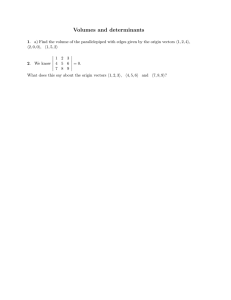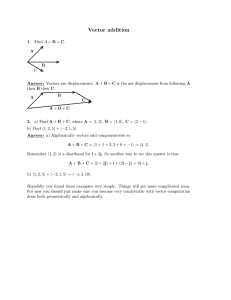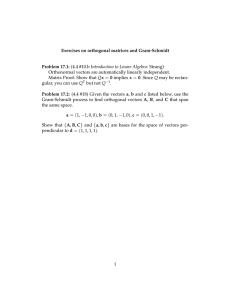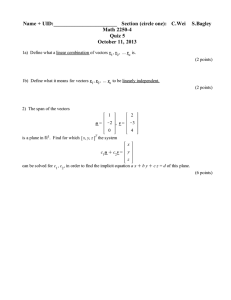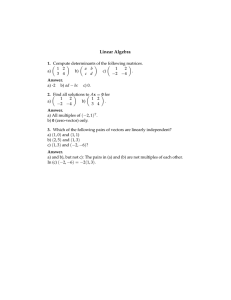Volumes and determinants
advertisement
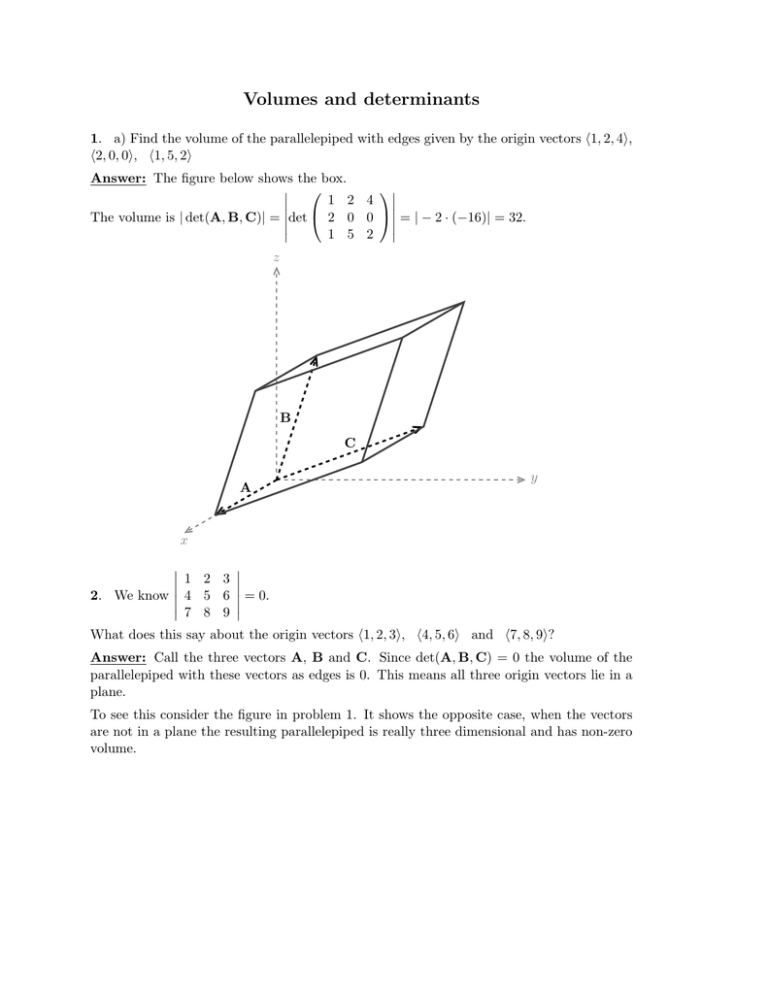
Volumes and determinants 1. a) Find the volume of the parallelepiped with edges given by the origin vectors �1, 2, 4�, �2, 0, 0�, �1, 5, 2� Answer: The figure below shows the box. � ⎛ ⎞� � 1 2 4 �� � The volume is | det(A, B, C)| = ��det ⎝ 2 0 0 ⎠ �� = | − 2 · (−16)| = 32. � 1 5 2 � z B C A y x � � � 1 2 3 � � � 2. We know �� 4 5 6 �� = 0. � 7 8 9 � What does this say about the origin vectors �1, 2, 3�, �4, 5, 6� and �7, 8, 9�? Answer: Call the three vectors A, B and C. Since det(A, B, C) = 0 the volume of the parallelepiped with these vectors as edges is 0. This means all three origin vectors lie in a plane. To see this consider the figure in problem 1. It shows the opposite case, when the vectors are not in a plane the resulting parallelepiped is really three dimensional and has non-zero volume. MIT OpenCourseWare http://ocw.mit.edu 18.02SC Multivariable Calculus Fall 2010 For information about citing these materials or our Terms of Use, visit: http://ocw.mit.edu/terms.
